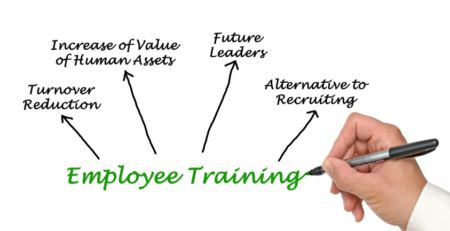Automating Finance Processes Guide
Automating Finance Processes opens opportunities for organisations to introduce technology. If your team is still manually keying information, copying and pasting information in Excel or spending hours compiling reports from disparate siloed systems, then the time may be right to look at changes. There are a range of tools available to help automate your finance function and see substantial operational improvements.
Automation solutions in finance help to increase operational productivity by freeing up employee time and ensures that teams are working with contemporary platforms which helps with engagement. They also help to reduce the chance of delays and errors within critical processes.
What Automating Finance Processes looks like
Finance Process Automation is achieved by using a range of different automation technologies and applying them to core finance processes, focusing on processes that contain manual steps and tasks, are high in criticality and are reliant on the rapid flow and influx of data.
Why Automating Finance Processes is beneficial?
- Increase operational efficiency – freeing up your team from manual activities helps to ensure that processes can execute faster with less effort.
- Reduce the likelihood of error – manual tasks and transposing information from one place to another; between Excel sheets and core applications, opens up potential for human errors. Automation technologies help to address this and reduce the scope for inaccuracies and ensure consistency of accounting processes.
- Ensure greater consistency – automating financial processes ensures that activities are executed in line with corporate procedures and outputs are generated as expected.
- Raise the profile of the finance function – by automating mundane activities, teams are freed up to focus on more valuable and strategic activities. Teams can focus on using their creativity to resolve issues and look for further opportunities for process improvement rather than manually keying data and physically completing process steps ensuring that the finance function can be seen as a strategic part of the organisation.
- Improve the customer experience – many finance processes involve interaction and communication with an organisation’s customers. If finance teams don’t have the ability to interact with digital channels or have up-to-date data, this can leave a negative perception with the client. Still sending physical invoices in the post /manually attaching to emails or chasing customers for debt that has already been paid are clear signs that processes need attention.
- Improve employee engagement – teams that are forced to work with out-dated processes and applications quickly become frustrated and disengaged. The can affect productivity and ultimately impact on customers and lead to higher levels of staff turnover. Hiring new employees is an expensive and time consuming activity at the best of times. At present with the threat of the ‘Great Resignation’ where large numbers of employees are potentially considering their future, this problem is compounded.
- Reduce risk and fraud – digital and automated processes help an organisation to ensure that risk opportunities for fraud are reduced by having greater control and visibility of activities being undertaken. In addition, as teams have more time available, efforts can be focused on identifying and mitigating against potential fraudulent activities.
- Comply with regulations – by consolidating data from disparate systems and auto-generating compliance reports organisations can limit the risk of reputational damage and fines.
Which Financial Processes to Automate?
- Supplier Invoice Processing – Eliminate manual data keying of supplier invoice data into Finance and ERP systems
- Accounts Payable – Digitally manage coding, routing and approvals of supplier invoices around the organisation
- Cash Allocation – Automatically match cheque and bank statement payments to sales ledgers and remittances
- Invoicing – Send invoices to customers via digital channels and send automated reminders to customers
- Financial Statement Preparation – Automate the compilation of data from multiple sources to accelerate the financial close process at period end
Which Technologies can Assist with Automating Financial Processes?
Cognitive Capture
Cognitive capture and document processing automation applications help organisations to dramatically reduce the manual keying of data from documents that is needed in subsequent processes, e.g. supplier invoices, expenses, remittances etc. Data is automatically read, validated and pushed into appropriate applications.
Robotic Process Automation
RPA applications assist greatly in the finance function to alleviate the transposition of data between systems. Tasks which often involve teams using Excel as a way of pulling together information from multiple sources and manipulating into a common format. RPA allows these processes to be automated by ‘mimicking’ the manual process as a series of process steps.
Digital Workflows
The use of digital workflows allows organisations to move from manual and physical processes to robust and efficient electronic ones. It ensures process steps are followed to the desired outcomes and in the correct sequence.
Communication Management
Communicating with customers and suppliers can be challenging. Different organisations have different methods, preferences and channels. A communication management platform allows an organisation to take control of how and when it communicates with others. It allows flexibility of how communications are sent, dependent on set rules and the capability of the receiving party to accept it. Successful delivery and access can be monitored, and it transforms a normally one way communication channel into a two way one through the use of interactive documents and portals to aid follow-on activities.
Process Insight & Auditability
Financial processes need to stand up to the rigours of internal and external auditing requirements and having the ability to identify what happened, when and who performed particular actions is crucial. In a manual world, this can be very challenging and can be reliant on paper records, logs and spreadsheets on various network drives and decisions made based on user experience.
Process insight technologies surface up process data into meaningful dashboards and help the function to see what has happened and what is happening now with discrete processes and transactions.
How to Approach Financial Process Automation?
Key Considerations for Effective Delivery of Financial Process Automation:
- Effective implementation will be a combination of people, process and technology. Technology in itself will not solve the problem. The process needs to be understood and users need to be onboard with the solution for the technology to work. Process Intelligence tools can help to map process steps based on historic data. They can identify decision points, identify exceptions and uncover dark processes.
- Consider using a Digital Adoption Solution (DAS). A DAS helps to ensure effective delivery of training in a way that is easily consumed by users and can greatly enhance the speed at which users become fully productive with new processes and technology.
- Point solutions or pre-built single use applications will often be a quick way to address a particular issue. Consideration should however be given the bigger picture and long term strategy. Large numbers of discrete solutions for different processes from different providers can lead to increased data risk exposure, legacy technical debt and support for multiple integrations. In many cases a single digital workflow platform like Kofax TotalAgility, that can accommodate multiple uses cases provides organisations with more resilience, lower total cost of ownership and increased flexibility to accommodate nuances of their own internal processes.
To understand how your organisation could benefit from automating finance processes please leave your details here and one of our experts will make contact.











